5 Moves That Speed Up Your Metabolism
Burn calories faster with these strength-training exercises you can do both in and out of the gym.
By K. Aleisha Fetters
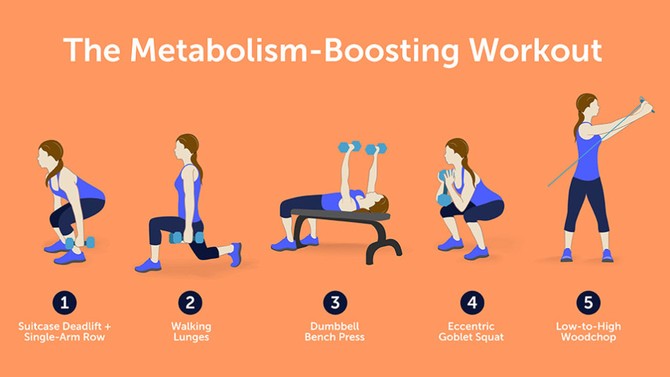
Illustration: Nicholas Davison
When it comes to your metabolism, there are some factors you just can't do much about (namely genetics and age). The good news: The amount of muscle mass on your frame is the greatest controllable factor in determining your metabolic rate, says Holly Perkins, a certified strength and conditioning specialist, the author of Lift to Get Lean and the founder of Women's Strength Nation. And one of the most effective ways to build muscle mass, which helps to burn more calories, is strength training.
To get the most out of your strength moves, use weights that you find truly challenging (translation: your weights are too light if you can breeze through the reps) and try exercises that train multiple muscles at once (aka compound exercises). Both tactics not only make the body work harder to recover, but also increase levels of muscle-building hormones, says Mark Barroso, a New Jersey-based certified personal trainer and Spartan SGX coach.
Bonus: Even after you leave the gym, strength training continues to boost metabolism through an afterburn effect called "excess post-exercise oxygen consumption" (or, EPOC, for short). EPOC refers to all the calories you burn while recovering from your workout, and while it can occur following high-intensity interval training, the post-workout caloric boost is also enjoyed following heavy lifting. A small study also shows that slowing down the eccentric, or "easy," part of each exercise (for example, lowering into a squat lunge) can increase EPOC for up to 72 hours post-workout.
To get the most out of your strength moves, use weights that you find truly challenging (translation: your weights are too light if you can breeze through the reps) and try exercises that train multiple muscles at once (aka compound exercises). Both tactics not only make the body work harder to recover, but also increase levels of muscle-building hormones, says Mark Barroso, a New Jersey-based certified personal trainer and Spartan SGX coach.
Bonus: Even after you leave the gym, strength training continues to boost metabolism through an afterburn effect called "excess post-exercise oxygen consumption" (or, EPOC, for short). EPOC refers to all the calories you burn while recovering from your workout, and while it can occur following high-intensity interval training, the post-workout caloric boost is also enjoyed following heavy lifting. A small study also shows that slowing down the eccentric, or "easy," part of each exercise (for example, lowering into a squat lunge) can increase EPOC for up to 72 hours post-workout.
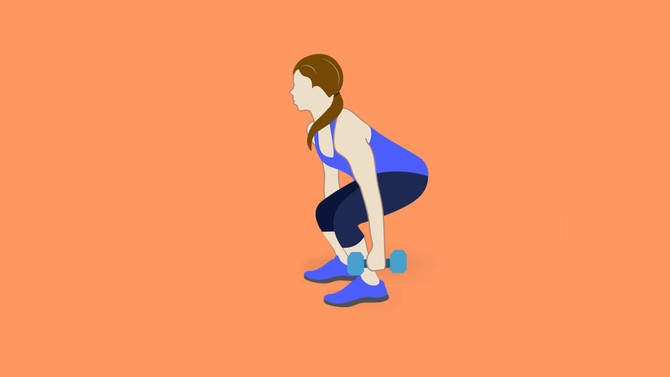
Illustration: Nicholas Davison
The Metabolism-Boosting Workout
Perform 3 sets of 10 to 12 reps of each exercise, resting for 30 to 60 seconds between each set. Use a weight that is challenging enough that, when you stop, you feel like you couldn't do one more rep (without compromising form).
1. Suitcase Deadlift + Single-Arm Row
Stand with your feet hip-width apart, holding a dumbbell in one hand down at your side, palm facing your body. Keeping your back flat, slowly push your butt back and, allowing a slight bend in your knees, lower the weight straight down until it's about halfway down your shin. Stop here, then pull your elbow back behind you to row the weight up to your waist. Pause, lower the weight back down your shin, then thrust your hips forward to return to standing. That's one rep. Repeat all reps on one side, then repeat on the opposite side.
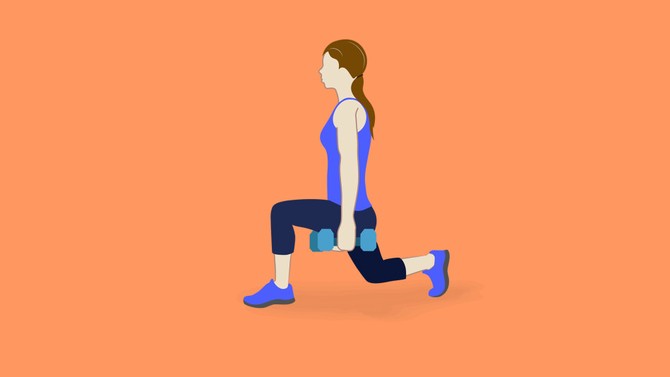
Illustration: Nicholas Davison
2. Walking Lunges
Stand with your feet hip-width apart, your hands either on your waist or down at your sides, each holding a dumbbell, palms facing your body. Take a giant step forward with one foot so that your back heel lifts up. Slowly bend your knees to lower your body as far as you can into a lunge, making sure to keep your weight in your front heel. Pause, then push through your front heel to raise your body, bringing your back foot forward to meet your front foot as you do so. Repeat on the opposite side. That's one rep.
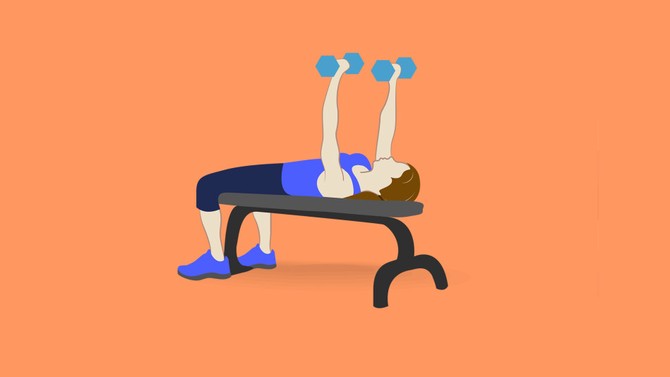
Illustration: Nicholas Davison
3. Dumbbell Bench Press
Lie on your back on a bench with a dumbbell in each hand, arms extended, so the weights are together and directly above your face, palms facing your feet. From here, slowly separate and lower the weights to both sides of your chest. Pause, then push the weights back up and together, making sure not to arch your back as you do so. That's one rep.
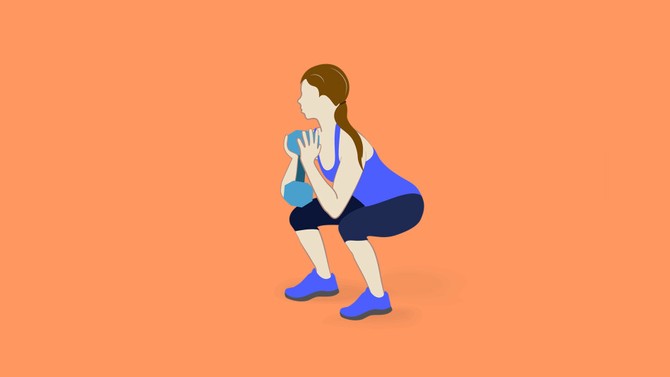
Illustration: Nicholas Davison
4. Eccentric Goblet Squat
Stand with your feet shoulder-width apart, holding one end of a dumbbell vertically with both hands directly in front of your chest. Slowly push your butt back and bend your knees to lower your torso straight down toward the floor until your elbows are just inside your knees. This lowering should take 3 to 4 seconds. Pause, then push through your heels and thrust your hips forward to return to standing. That's one rep.
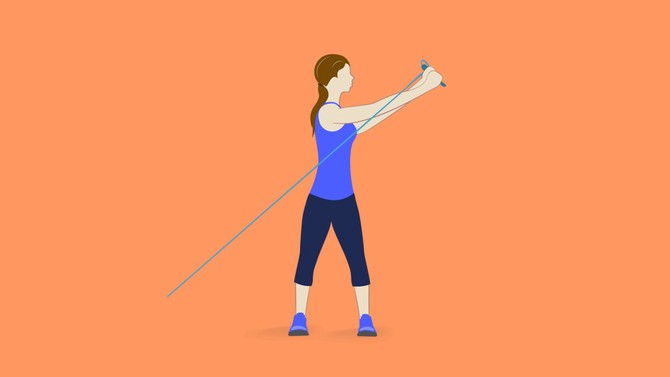
Illustration: Nicholas Davison
5. Low-to-High Woodchop
Attach a handle to a cable station (or firmly tie a resistance band to a sturdy object) as close to the floor as possible. Standing with your feet shoulder-width apart and one shoulder facing the station, lower to a quarter-squat to grab the handle with both hands, so that your arms are fully extended and your torso is rotated toward the station. Squeeze your abs to pull the handle diagonally up and across your body, standing up and twisting your torso away from the station, until your arms are up at head height. Pause, then slowly reverse the motion to return to the starting position. That's one rep. Repeat all reps on one side, then repeat on the opposite side.
Published 08/16/2017

